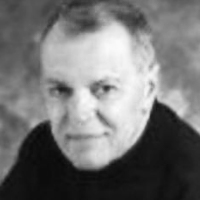This article is a written transcript of the course, “Selective Mutism: Comprehensive Assessment”, presented by Robert Thompson, Ph.D., CCC-SLP on October 24, 2011.
>> Amy Hansen: I want to welcome you to today's expert seminar: “Selective Mutism: Comprehensive Assessment” presented by Robert Thompson. Dr. Thompson earned a Ph.D. in communication disorders at the University of Oklahoma and has been a Professor at the University of Texas, University of Oklahoma, and Northeastern State University in Oklahoma. He was Director of Speech‑Language-Hearing for 16 years at Tulsa's Children's Medical Center, a psychiatric and pediatric hospital. Currently he is a consultant to Developmental Pediatrics, Hillcrest Medical Center and to Pediatrics, W.W. Hastings Indian Hospital of the Cherokee Nation. He has presented on Selective Mutism throughout the United States and for the National Associations of Canada, Australia and New Zealand and at the 2004 Congress of the International Association of Logopedics and Phoniatrics. So welcome Dr. Thompson and thank you so much for joining us today.
[Applause]
>> Dr. Thompson: Thank you very much for that introduction. I have been working with selectively mute children for about 30 years. My first one was in 1980 when I was working at a psychiatric pediatric hospital that Ms. Hansen mentioned. I remember the name of my first patient. He was Jeremy. He was an outpatient and while working with him he was about seven or eight years old, I discovered a lot of my work had to be with the parents and the school, not necessarily with the boy. I also had inpatients at that hospital. I remember Juan and then a young lady, I think her name was Candy, both teenagers who had been selectively mute since they had been toddlers. Currently, I have five patients that are selectively mute. They range in age from about four years old to a new one I just picked this up morning who is an 11‑year‑old. Most of my selective mute children are youngsters. They're in elementary school, pre‑K, kindergarten and first grade. Let's look first at this information.
A Recognized Condition for More than 100 Years
I work with a lot of speech‑language pathologists, psychologists, and physicians in regards to this condition. It is always surprising to me that many of them say they have never really studied or heard much about this condition yet it has been a recognized condition for more than 100 years. In fact, if you go back into the literature in Germany you will find it mentioned.
Because I work in two hospitals classifying children, I have to have a reference for whatever I do. My reference is always the DSM IV‑TR but let's go back and look at this historically. This particular document is titled: Diagnostic Statistical Manual of Mental Disorders.
- The first edition was published in 1952. It was a very slim volume and mutism was not a specific classification.
- In the DSM-II, which came out in 1968, it was still not a specific classification. It was considered an adjustment reaction of childhood.
- In 1982 the DSM-III was published and this was a really large volume which significantly improved the understanding of psychiatric behavioral problems. And in that edition in 1982, the DSM III called it ‘elective mutism’. It was introduced as a specific classification. And it was classified and called elective mutism because the specialist at that time considered it as being something that children elected to do. They could elect to do mutism. They could elect to do conduct disorders. They could elect to be aggressive. So elective was the modifier.
- In 1987 the DSM-III was published and the ‘R’ after the III means revision. The DSM III-Revised. It was then again retained as a separate classification with changes in associated features. We're going to look at associated features this morning.
- Then we had in 1994 the DSM-IV and the name was changed from ‘Elective’ to ‘Selective’. Selective mutism is now the preferred term for this condition. The thinking on that is that these children select when, where and with whom they're going to be silent. So they do not elect the condition. They select when they're going to be silent.

